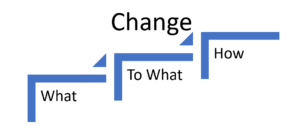Change Management
Domains
Strategic changes, Human resource management, small and large operational changes
Specific Goals
Implementation of small or fundamental changes at a rapid pace by attaining consensus from key figures and the support of the entire organisation.
Rapid is not a synonym for shallow, on the contrary, every change is a step to long-term goals.
Usual results
- Development of break-through solutions to attack new markets in a short space of time.
- Gaining market share in crisis time by correctly utilising overcapacity.
- Reaching consensus to stop 80% of running projects and to replace them with one global strategic project.
- The habits of management change from the ruling of “isolated kingdoms” to a management team that cooperates to reach common goals.
- Gaining support from ‘difficult’ groups or individuals within an organisation.
- Developing and implementing a strategy that is based on more throughput rather than austerity.
Specific techniques
- S&T Logic Strategy and tactic translating the top level strategy to lower level strategies up to the level of actions.
- Analysing the core cause, even in complex organisations or with complex issues the difference between symptoms and causes becomes clear.
- The logic behind small and large conflicts or supposed contrasts is converted to understanding of the underlying logic.
- Before implementing a solution, it is tested to see if it truly leads to all expected results. Thanks to this, ‘holes’ in future plans can be discovered and filled.
- Negative bifurcation. This partial process shows the negative effects of the realisation of the future logic. It avoids that a good project stagnates or even stops because of, often predictable, negative effects. The second part of the NBR-process allows for the avoidance of these problems and thus reinforces the solution.
- Necessary and sufficient logic. Converting an idea to practical and realisable steps checking sufficiency and necessity of each step .
Our Offer
Recommended literature: “It’s not luck” by Dr Eli Goldratt
In-company learning of the techniques
Strategic courses, possibly with knowhow transfer, guided by TOC-experts

